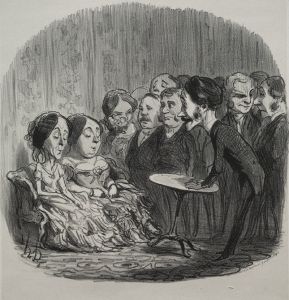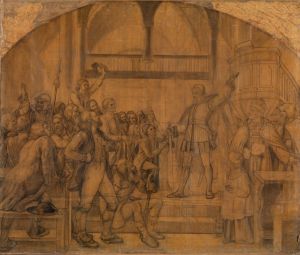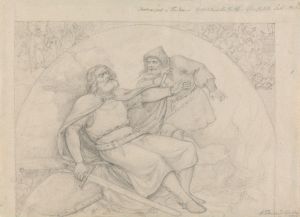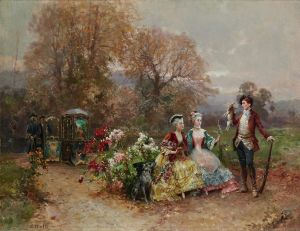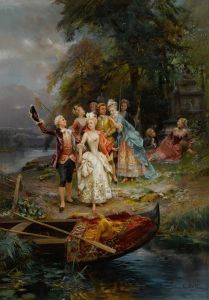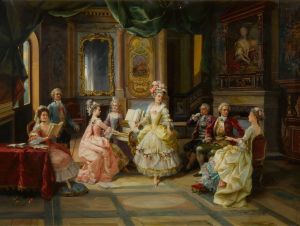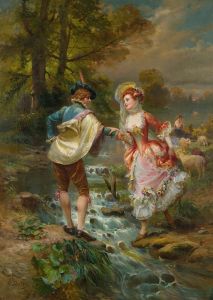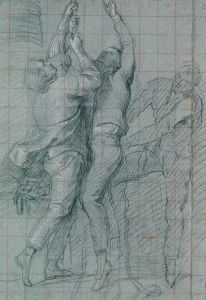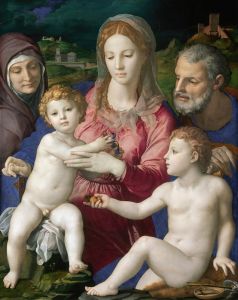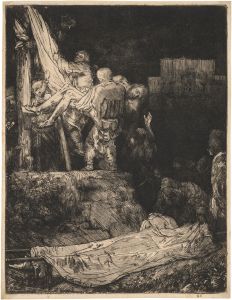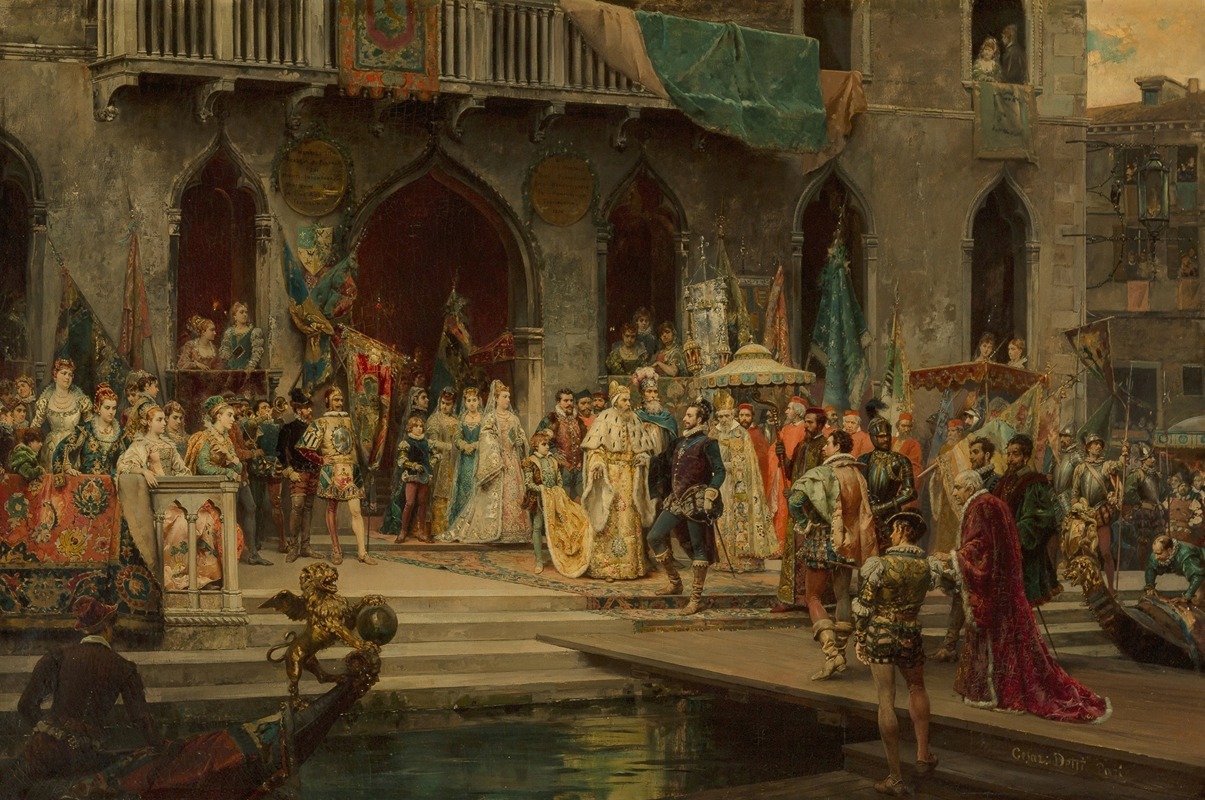
Henri III reçu par le doge Muccinigo au palais Foscari
A hand-painted replica of Cesare Auguste Detti’s masterpiece Henri III reçu par le doge Muccinigo au palais Foscari, meticulously crafted by professional artists to capture the true essence of the original. Each piece is created with museum-quality canvas and rare mineral pigments, carefully painted by experienced artists with delicate brushstrokes and rich, layered colors to perfectly recreate the texture of the original artwork. Unlike machine-printed reproductions, this hand-painted version brings the painting to life, infused with the artist’s emotions and skill in every stroke. Whether for personal collection or home decoration, it instantly elevates the artistic atmosphere of any space.
Cesare Auguste Detti's painting Henri III reçu par le doge Muccinigo au palais Foscari (translated as Henry III Received by Doge Mocenigo at the Foscari Palace) is a historical artwork that depicts a significant moment in European history. The painting illustrates the ceremonial reception of King Henry III of France by Doge Alvise I Mocenigo in Venice, an event that took place in 1574. This meeting occurred during Henry III's journey from Poland to France, following his election as King of Poland and his subsequent ascension to the French throne after the death of his brother, Charles IX.
Cesare Auguste Detti (1847–1914) was an Italian painter known for his historical and genre scenes, often characterized by meticulous attention to detail and a romanticized portrayal of historical events. His works frequently focused on European aristocracy, courtly life, and significant historical moments, rendered with vibrant colors and dramatic compositions. This painting is consistent with Detti's style, emphasizing the grandeur and pageantry of the event.
The scene captures the opulence and ceremonial splendor of the late Renaissance period. Henry III, dressed in regal attire, is shown being formally welcomed by Doge Mocenigo, the elected leader of the Venetian Republic. The setting, the Foscari Palace, is a notable architectural landmark in Venice, reflecting the city's wealth and cultural significance during the Renaissance. The painting likely emphasizes the diplomatic importance of the meeting, as Venice was a major power in Europe at the time, and Henry III's visit symbolized the strengthening of ties between France and the Venetian Republic.
While the painting is a historical representation, it is important to note that artistic works of this nature often incorporate elements of creative interpretation. Detti's depiction may not be an entirely accurate historical record but rather an artistic reimagining of the event, designed to evoke the grandeur and significance of the occasion.
The painting is an example of Detti's ability to bring historical moments to life through his art, offering viewers a glimpse into the cultural and political dynamics of 16th-century Europe. However, specific details about the painting's current location, date of creation, or its provenance are not widely documented.





